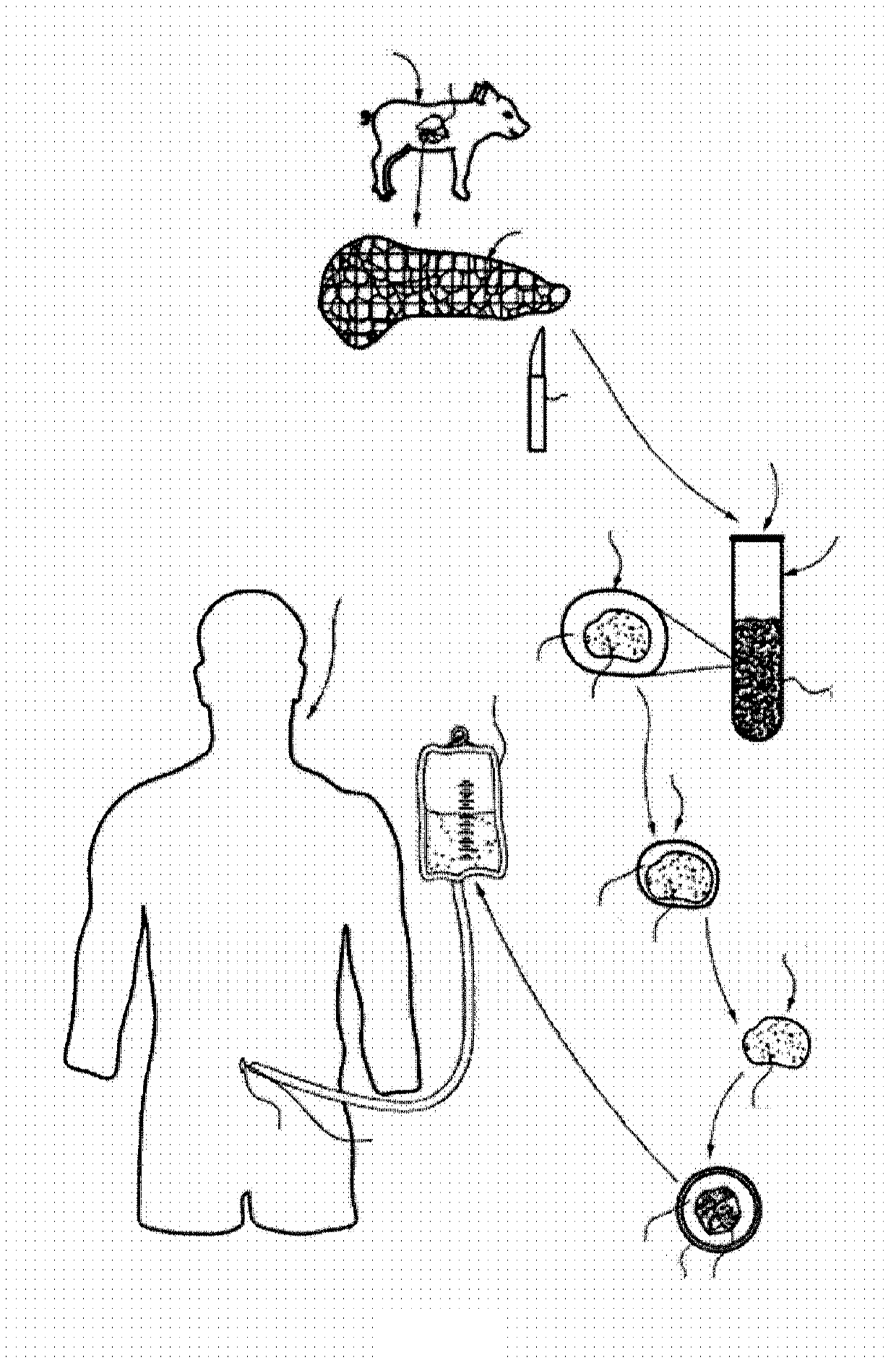Ex vivo maturation of islet cells
A mature technology of islet cells, applied in the field of ex vivo maturation of islet cells, can solve the problems of costing up to two to three months, unsatisfactory, variable glucose responsiveness, etc.
- Summary
- Abstract
- Description
- Claims
- Application Information
AI Technical Summary
Problems solved by technology
Method used
Image
Examples
Embodiment 1
[0046] Example 1. Islet removal and isolation
[0047] Weaning piglets were used as a donor source of immature islets. A typical islet preparation method uses ten Yorkshire piglets aged 14 to 26 days. Pancreas were removed from piglets by quick surgical harvest (ie, less than five minutes) and placed in ice-cold organ preservation solution (Corning Cellgro). The ischemic time throughout the cooling was limited to 20 minutes. Harvested pancreases were pooled and dissected as follows. After freezing, animal fat and lymphatic tissue around the pancreas are excised, followed by finely mincing until the diameter of the tissue section is usually 0.5 mm to 1.0 mm. Continue the cutting process using standard scissors and agitation techniques to mince the pancreatic tissue. Minced tissue was added to an enzyme mix of low-dose Clzyme collagenase MA / BP protease (75-250 mg / pancreas, VitaCyte LLC, Indianapolis, IN) and allowed to digest at 37°C with gentle shaking and rotation (40-250 ...
Embodiment 2
[0048] Example 2. Recovery of isolated islets
[0049] For 48 hours after the first isolation, islet clusters were cultured in a new tissue culture medium called recovery maturation medium. The first step in preparing recovery maturation medium involves obtaining Ham's F-12 / Medium199 basal medium (F-12 / 199 medium) in which Ham's F-12 and Medium199 components are present in a 1:1 ratio. In these studies, Ham's F-12 and Medium199 powders (both purchased from Cellgro, Inc.) were added at a weight / volume (w / v) concentration of 0.815% each (ie, 8.15 g in 1 L of water) : 2000 and cGMP guidelines (Thermo Scientific Inc., Waltham, MA) sterile water to prepare F-12 / 199 medium. Add to this F-12 / 199 medium afterwards: 5.5% (w / v) porcine serum (Lampire Biological Laboratories, Inc., Pipersville, PA); 2.5 * 10 -3 % (w / v) gentamicin sulfate (Fisher Bioreagents, Thermo Fisher Scientific, Inc., Waltham, MA); 0.062% (w / v) glutathione tripeptide (Acros Organics, Thermo Fisher Scientific, Inc....
Embodiment 3
[0050] Example 3. Maturation of resected islets
[0051] After 48 hours of culture in Recovery Maturation Medium, islets were removed from Recovery Maturation Medium, centrifuged at 200 xg for two minutes, and then resuspended in a modification of Recovery Maturation Medium referred to herein simply as "Maturation Medium". Specifically, the difference between the recovery mature medium and the mature medium is that the mature medium has half the amount of Pefabloc TM and DNase alpha. Islets were cultured in maturation medium until the islets were fully mature, a period of about eight to nine days, during which time 50% of the medium was changed every 48 hours. Full maturation of islets was defined according to histochemical and functional assays described in the Examples below. When the islets reach full maturity, they can be cultured long-term in "supplemented maturation medium", which is a maturation medium that contains an additional 5 mM concentration of calcium. Additi...
PUM
| Property | Measurement | Unit |
|---|---|---|
| diameter | aaaaa | aaaaa |
| diameter | aaaaa | aaaaa |
Abstract
Description
Claims
Application Information
 Login to View More
Login to View More - R&D
- Intellectual Property
- Life Sciences
- Materials
- Tech Scout
- Unparalleled Data Quality
- Higher Quality Content
- 60% Fewer Hallucinations
Browse by: Latest US Patents, China's latest patents, Technical Efficacy Thesaurus, Application Domain, Technology Topic, Popular Technical Reports.
© 2025 PatSnap. All rights reserved.Legal|Privacy policy|Modern Slavery Act Transparency Statement|Sitemap|About US| Contact US: help@patsnap.com



